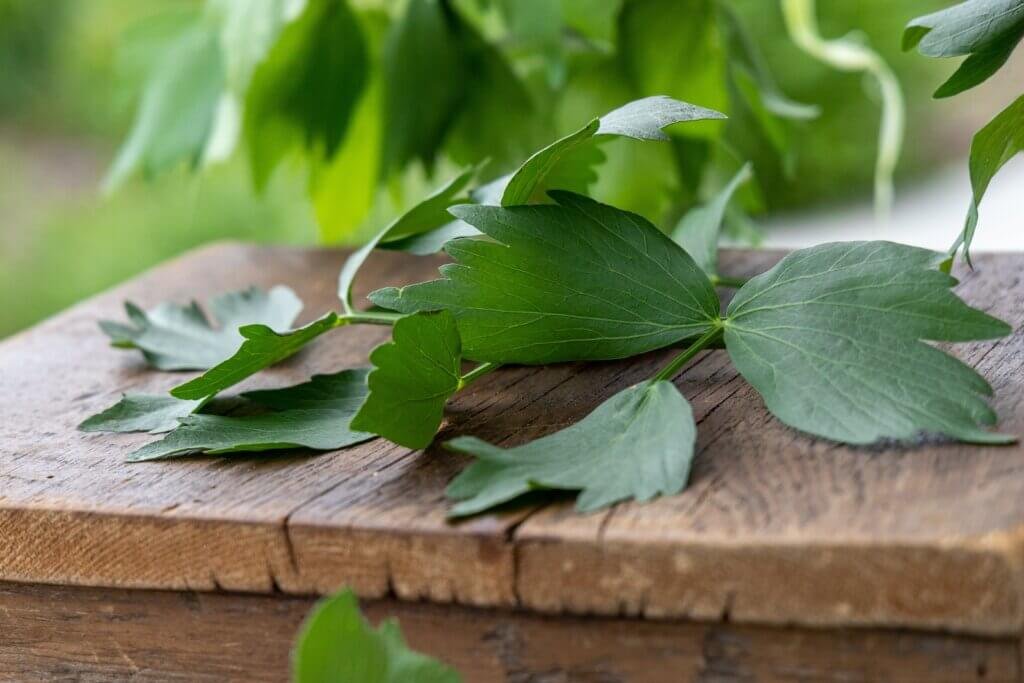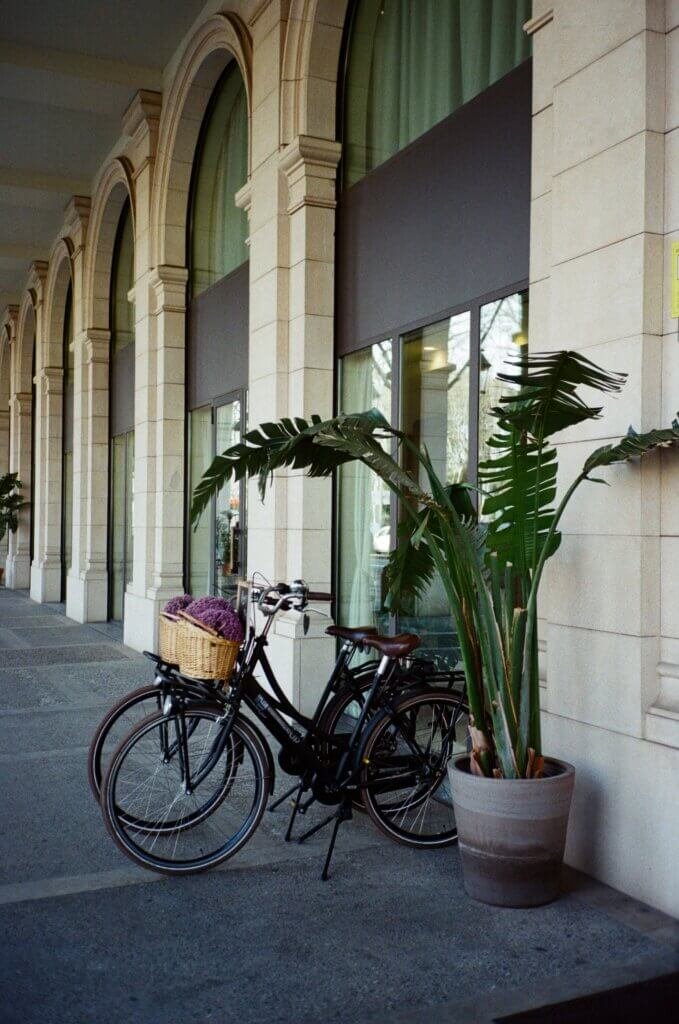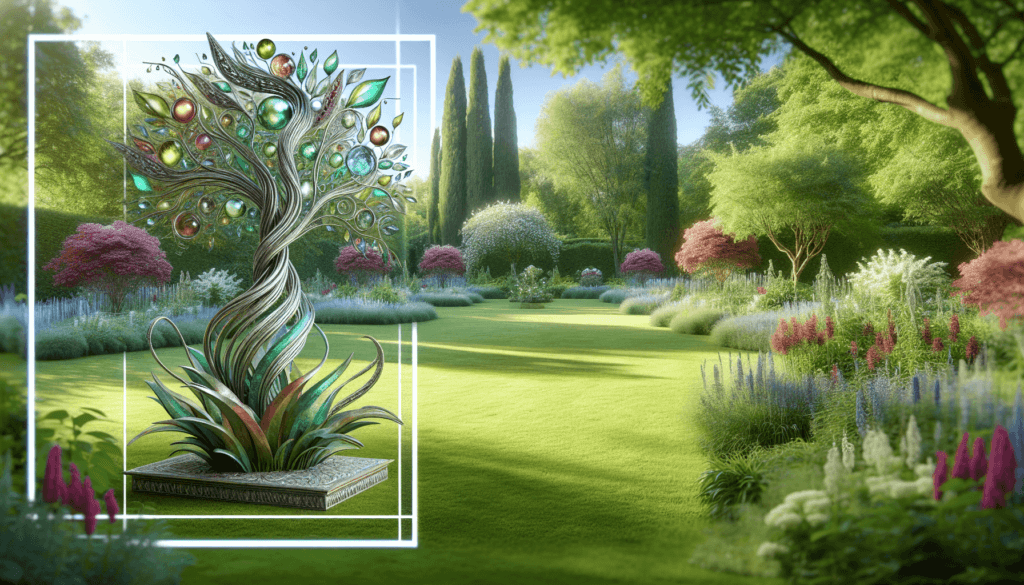Do you enjoy spending time in your garden? Looking for a fun and creative way to jazz up your outdoor space? Look no further! In this article, you’ll discover how to make your own DIY garden art and sculptures. Whether you have a green thumb or not, these simple and affordable techniques will help you add a personal touch to your garden while expressing your artistic flair. Get ready to turn your backyard into a one-of-a-kind masterpiece that will impress your neighbors and provide endless enjoyment for you and your loved ones. So grab your gardening gloves and let’s get started!
Choosing Materials
When it comes to creating your own garden art and sculptures, choosing the right materials is essential. Not only will the materials determine the overall look and feel of your artwork, but they will also impact its durability and longevity. There are various options to consider, such as recycled materials, natural materials, and metal materials.
Recycled Materials
Using recycled materials for your garden art not only adds a unique touch to your outdoor space, but it also promotes sustainability and environmental consciousness. Look around your home and see what items you can repurpose. Old bottles, cans, and even broken ceramics can be transformed into beautiful pieces of art. Get creative with your materials and see how you can give them a new life in your garden.
Natural Materials
If you prefer a more organic and harmonious look for your garden art, natural materials may be the perfect choice for you. Stones, driftwood, and seashells can be incorporated into your artwork to create a rustic and earthy feel. Let nature inspire you and use its beauty as your artistic canvas. Natural materials not only blend seamlessly into outdoor spaces but also withstand the test of time.
Metal Materials
For a modern and contemporary touch, metal materials are an excellent option for creating garden art and sculptures. Metals such as steel, copper, and aluminum can be molded and shaped to bring your artistic vision to life. The sleek and reflective nature of metal adds a touch of sophistication to any outdoor setting. Consider the style and theme of your garden when choosing metal materials to ensure they fit seamlessly into the overall design.
Planning and Designing
Before you jump into creating your garden art and sculptures, it is important to spend some time planning and designing. This will help you solidify your ideas, determine your style and theme, and ensure that your artwork aligns with your overall vision for your garden.
Determining your style and theme
Start by brainstorming and determining the style and theme that resonates with you. Do you prefer a whimsical and playful garden or a more minimalist and contemporary look? Consider the existing elements in your garden, such as the color palette and landscaping, and think about how your artwork can complement and enhance these features.
Sketching out your design
Once you have a clear idea of the style and theme you want to adopt, it’s time to translate those ideas into visual representations. Grab a sketchbook and start sketching out your design. Don’t worry about being an expert artist – the purpose of this exercise is to simply get your ideas on paper. Play around with different shapes, sizes, and placements until you find a design that you’re happy with.
Considering the size and placement
As you sketch out your designs, it’s important to consider the size and placement of your garden art and sculptures. Think about the available space in your garden and how each piece will fit into the overall layout. Will your artwork be a focal point or blend into the background? Take measurements to ensure that your creations will fit harmoniously into your outdoor space.

Creating Garden Art
Now that you have your plans and designs in place, it’s time to bring your garden art and sculptures to life. There are numerous techniques and materials you can use to create unique and eye-catching artwork for your garden.
Painting rocks
One simple and affordable way to add color and personality to your garden is by painting rocks. Gather some smooth rocks from your local craft store or search for interesting ones in nature. Use acrylic paints to create vibrant designs and patterns on the rocks. Whether you choose to paint intricate designs or inspirational words, these painted rocks will inject a touch of charm into your garden.
Building a birdhouse
Not only does a birdhouse attract feathered friends to your garden, but it can also serve as a beautiful piece of garden art. You can purchase birdhouse kits from your local craft store or build one from scratch using reclaimed materials. Customize the design and colors to match your garden’s aesthetic and enjoy the delightful chirping melodies that your new avian neighbors bring.
Making a mosaic stepping stone
If you’re looking to add an artistic element to your garden path, consider making a mosaic stepping stone. Begin by purchasing a plain stepping stone or repurposing an old one from your garden. Gather colorful pieces of broken pottery, glass, or tiles and arrange them into a mosaic pattern on the stepping stone. Secure the pieces with grout, let it dry, and voila – you have a one-of-a-kind stepping stone that is both functional and visually appealing.
Sculpting Techniques
Sculpting adds dimension and a three-dimensional element to your garden art. Whether you prefer working with clay or carving wood, there are various sculpting techniques you can explore to bring your artistic vision to life.
Using clay or pottery
Working with clay or pottery allows you to mold and shape your garden art with your own hands. Clay is a versatile material that can be easily manipulated and fired in a kiln. Create sculptures of animals, flowers, or abstract shapes. Alternatively, pottery wheel techniques can be used to create functional pieces such as vases or planters.
Carving wood or stone
For a more traditional and natural look, consider carving wood or stone for your garden sculptures. Wood carving requires specialized tools and skills, but the end result can be breathtaking. Choose a durable wood type, such as cedar or oak, and use techniques like chiseling, sanding, and polishing to bring out the intricate details of your sculpture. Stone carving, on the other hand, involves using carving tools to shape and refine stone blocks into beautiful creations.
Creating wire sculptures
If you prefer a more contemporary and abstract approach to sculpting, wire sculptures are a fantastic option. Using various gauges of wire, you can bend and twist them into intricate shapes and forms. Explore different techniques such as wire wrapping, soldering, or weaving to create unique and visually captivating sculptures that dance and sway with the wind.

Adding Color and Texture
Now that your garden art and sculptures are taking shape, it’s time to add color and texture to make them truly pop. Choosing the right paints and using different painting techniques will enhance the overall aesthetic appeal of your artwork.
Choosing the right paints
When it comes to choosing paints for your garden art, opt for outdoor-friendly paints that are specifically formulated for durability and weather resistance. Acrylic paints are a popular choice as they dry quickly, adhere well to various surfaces, and are available in a wide array of colors. Additionally, consider using UV-resistant paints to prevent fading from sun exposure.
Using different painting techniques
Once you have your paints, start experimenting with different painting techniques to add depth and visual interest to your garden art. Explore techniques such as sponging, stippling, or dry brushing to create unique textures and effects. Use varying brush sizes and strokes to add dimension and highlight different areas of your artwork. Don’t be afraid to let your creativity flow and try out new techniques that resonate with your artistic style.
Adding texture with mixed media
In addition to paint, consider incorporating mixed media materials to add texture and visual intrigue to your garden art. Fabrics, glass beads, shells, or even found objects can be adhered to your artwork using glue or a clear adhesive. These materials not only add tactile appeal but also create a multi-dimensional look that will capture the attention of anyone admiring your garden.
Installing and Displaying
Once your garden art and sculptures are complete and beautifully adorned, it’s time to install and display them in your outdoor space. Proper installation and placement will ensure that your artwork is showcased to its fullest potential.
Preparing the garden space
Before installing your garden art, take some time to prepare the area where you plan to display it. Clear the space of any debris or overgrowth, ensuring that it is clean and ready to highlight your artwork. Consider adding landscaping elements such as mulch, stones, or plants to enhance the overall aesthetic appeal of the area.
Choosing the right location
When it comes to displaying your garden art, location is key. Consider the size and visual impact of each piece and choose locations that maximize their presence. Focal points such as the entrance area, or areas with a blank wall or large expanse of space, are great choices to showcase your artwork. Ensure that each piece is placed strategically to create a harmonious flow and balance within your garden.
Using pedestals or stands
Depending on the size and type of your garden art, you may need to use pedestals or stands to elevate and display them effectively. Pedestals can add height and create visual interest, while stands can provide stability and support for larger or heavier pieces. Consider the material and design of the pedestals or stands to ensure they complement your artwork and fit seamlessly into your garden’s overall aesthetic.

Maintaining Garden Art
Once your garden art and sculptures are installed and displayed, it is important to maintain them to ensure their longevity and continued beauty. Regular cleaning, protection, and occasional updates will keep your artwork looking its best.
Cleaning and protecting outdoor art
Outdoor garden art is exposed to various environmental elements such as rain, wind, and sun. Regular cleaning is essential to remove dirt, debris, and any potential stains. Use a mild soap and water solution, or a specialized cleaner recommended for the specific material, to gently clean your art. Additionally, consider applying protective coatings such as sealants or varnishes to safeguard your art from weathering and fading.
Repairing damaged pieces
Accidents can happen, and your garden art may occasionally suffer damage. If a piece becomes chipped, cracked, or broken, don’t despair – many repairs can be done. Depending on the material, you may be able to patch or fill in the damaged areas with appropriate adhesives or fillers. For more extensive damage, seek professional assistance or consult online tutorials for specific repair techniques.
Updating or refreshing the design
Over time, you may find that you want to refresh the look of your garden art or make changes to fit a new design concept. Don’t be afraid to update or modify your pieces as your artistic vision evolves. Repaint pieces to change the color scheme, add new materials for texture, or even repurpose elements into completely new designs. Your garden art is a reflection of your creativity, so let it grow and transform alongside you.
Incorporating Water Features
Water features bring a sense of tranquility and serenity to any garden. Consider incorporating water elements into your garden art and sculptures to create a soothing and visually captivating display.
Building a small fountain
A small fountain can be a delightful addition to your garden, adding the soothing sound of flowing water and a touch of elegance. There are various fountain kits available that make installation a breeze. Choose a design that complements your garden’s aesthetic, whether it’s a classic tiered fountain or a more modern minimalist design. The sight and sound of water cascading will create a peaceful ambiance and enhance the overall sensory experience of your garden.
Creating a pond or water garden
If you have the space, consider creating a pond or water garden as a centerpiece for your outdoor space. By carefully selecting aquatic plants, rocks, and fish, you can transform a simple body of water into a living ecosystem that will attract wildlife and create a serene oasis. Research the proper construction techniques and maintenance requirements to ensure that your pond remains healthy and sustainable.
Adding a water sculpture
For a unique and captivating focal point, consider adding a water sculpture to your garden. These artistic installations incorporate water elements into the design, creating an intriguing combination of movement, sound, and visual appeal. Water sculptures can range from simple cascading structures to elaborate and intricate designs. Work with a professional or consult online tutorials to create a water sculpture that suits your style and technical abilities.

Using Plants and Flowers
Integrating living vegetation into your garden art and sculptures can create a harmonious blend of art and nature. Explore the following ideas to incorporate plants and flowers into your garden artwork.
Using plants as part of the art
Incorporate potted plants directly into your garden art for a unique and vibrant touch. Consider creating planters out of repurposed materials such as old tires or broken ceramics. Fill these planters with colorful flowers or trailing vines that will grow and intertwine with your art, creating a living work of art that evolves over time.
Growing vines or climbers on sculptures
If you have sculptures with vertical elements, consider growing vines or climbers on them. Choose plants that have tendrils or clinging roots, such as ivy or climbing roses, and train them to wrap around the structure. As these plants grow and bloom, they will add a lush and organic element to your sculptures, enhancing their beauty and creating a stunning visual display.
Creating living sculptures
For a truly unique garden art experience, consider creating living sculptures using plants. These sculptures are formed by shaping and training living plants to grow in specific patterns or forms. Techniques such as topiary, espalier, and bonsai can be used to create intricate and eye-catching living sculptures. With proper care and pruning, these living artworks will continue to evolve and impress year after year.
Showing Off Your Work
Once you’ve created your garden art and sculptures, it’s time to showcase your creativity and hard work. Sharing your artwork with others can be a rewarding experience that brings joy and inspiration to both you and those who admire your creations.
Entering art shows or contests
Consider entering your garden art and sculptures into local art shows or contests. This not only allows you to share your creations with a wider audience but also gives you the opportunity to receive feedback and recognition for your artistic efforts. Research local art organizations and community events to find opportunities to exhibit your work.
Inviting friends and family for a garden party
Hosting a garden party is a fun and intimate way to share your artwork with friends and family. Celebrate your creativity by inviting loved ones to enjoy your outdoor space, admire your garden art, and spend quality time together. Arrange the art in a way that encourages exploration and conversation, and provide activities such as garden-themed crafts or art demonstrations to further engage your guests.
Sharing your creations online
In this digital age, sharing your garden art and sculptures online can bring your creations to a worldwide audience. Create a website or blog to showcase your artwork, explaining the inspiration behind each piece and providing high-quality photographs. Utilize social media platforms such as Instagram and Pinterest to share your creations and connect with other artists and enthusiasts. Online platforms allow for instant feedback and the opportunity to inspire and be inspired by the global creative community.
In conclusion, creating your own DIY garden art and sculptures is a rewarding and fulfilling endeavor that allows you to express your creativity and enhance the beauty of your outdoor space. By choosing the right materials, planning and designing meticulously, and exploring various techniques and styles, you can create unique and captivating artworks that reflect your personal style and bring joy to all who admire them. Remember to maintain and care for your artwork, incorporate water features and living elements, and confidently share your creations with others. Let your garden become a gallery and a testament to your artistic journey.



